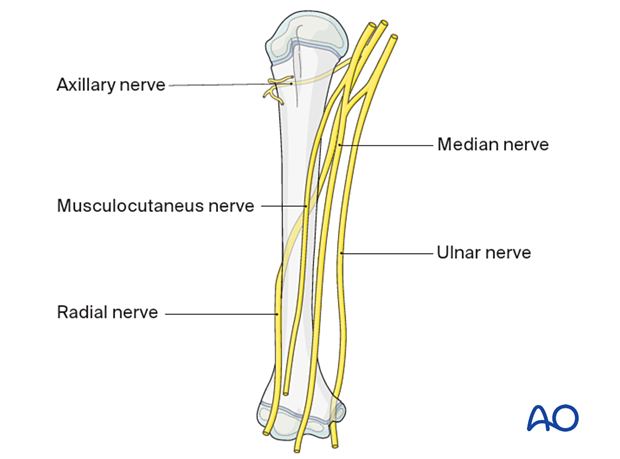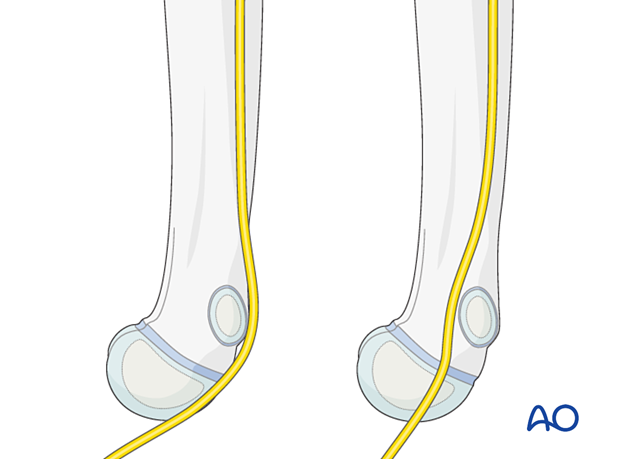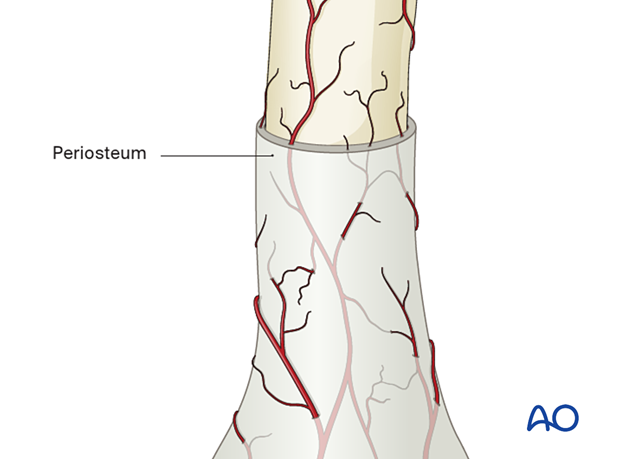Neurovascular anatomy
Surgically relevant anatomical structures in the humeral shaft include:
- Radial nerve
- Ulnar nerve
- Axillary nerve
The morphology of the humerus is the same in adults and children.
Adult numerical values describing the location of neurovascular structure must be adjusted in children.
For example, the distance between the radial nerve and distal articular surface is shorter, and influences implant selection.

The ulnar nerve is unstable in up to 50% of children and moves in front of the epicondyle in varying degrees of elbow flexion.
- Shen P-C, Chern T-C, Wu K-C, et al. The assessment of the ulnar nerve at the elbow by ultrasonography in children. J Bone Joint Surg Br. 2008 May;90(5):657–661.

The rich blood supply and thick periosteum are associated with predictable fracture union with nonoperative management, particularly in younger children.














